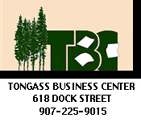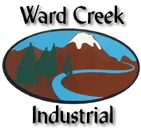 By SARANA SCHELL Anchorage Daily News March 13, 2006
Last year's health spending statewide hit an estimated $5.3 billion - one-sixth the value of all the state's goods and services produced that year - up from $1.6 billion in 1991, according to the report titled "Alaska's $5 Billion Health-Care Bill - Who's Paying?"
Nationally, technology is the biggest reason health care costs jumped more than twice the inflation rate, said Mark Foster, who co-authored the report with Scott Goldsmith of the University of Alaska Anchorage's Institute of Social and Economic Research. That agency plans more studies to better understand cost pressures, he said, particularly in Alaska. In Alaska, part of the reason health costs are rising faster than in the Lower 48 is the high portion of Alaska residents covered by federal programs, Foster said. Military and Medicare insurance programs pay less than the going rate for a doctor's office visit, the report said. Medical centers then press private insurers to pay more to cover the costs that federal programs don't, Foster said. The ISER study found: - Government programs pay the biggest health care bill in the state: $2.2 billion, or 42 percent. The federal government pays about three-fourths of that, with the state picking up about a quarter and local government paying just a sliver. Medicaid spending, which covers the needy, more than quadrupled, to nearly $1 billion last year. The state paid nearly a third of that. - Employers paid 39 percent, or $2 billion. Government paid more than half of that for public workers, with private businesses paying the rest. To put the expense in perspective, employers paid $11.8 billion in wages. - Individuals paid the smallest share, $1 billion, or almost one-fifth of the spending. That was up from $360 million in 1991. "Individuals are paying way more; (businesses) are paying way, way more," Foster said. "You think you have it bad, look over the fence at what they're spending." Soaring health costs make the state's labor force more expensive, potentially putting Alaska at a competitive disadvantage, Foster said. Some employers are lowering their costs by becoming self-insured, which can shave the price of running a health plan, and offering employees a range of health plans, which can shift some costs to the workers. About half the workers for private companies have health insurance available through their employers, the study found. Bigger businesses are more likely to offer health benefits. The high cost of health needs to be addressed, said Duane Heyman, executive director of the Alaska Health Care Roundtable, a project of Anchorage civic group Commonwealth North that aims to improve health care quality and access. "Business as usual is unacceptable," he said. His group includes Alaska corporations, health-care organizations, insurance representatives and patients. Changes such as adopting electronic patient records could significantly boost quality and lower cost, he said. While costs have increased, the nation's health expenditures have paid off in longer life spans, Foster said. "People like health and they want it," Foster said. Higher costs are a product of "all of us demanding the best we can get because it's available." In general, Alaskans are healthier than they used to be, with lower infant mortality, heart disease deaths and smoking rates. However, the state's rising obesity rate is a major concern, said Tammy Green, a state public health section chief. The trend is an expensive one because it aggravates chronic diseases such as diabetes, requiring long-term treatment with medications, doctor visits or even dialysis. Kids today, for the first time, are at risk of having shorter lives than their parents, Green said. "We've come so far with what we can do with technology to save people's lives that now what's killing us most is in our own hands," Green said. "It's all lifestyle choices: healthy eating, exercise and not smoking." More ISER research on Alaska's health care costs is coming, Foster said. If current trends hold, the
authors said, spending could double again in the next seven years Scripps Howard News Service, http://www.shns.com Publish A Letter on SitNews Read Letters/Opinions
|
||


